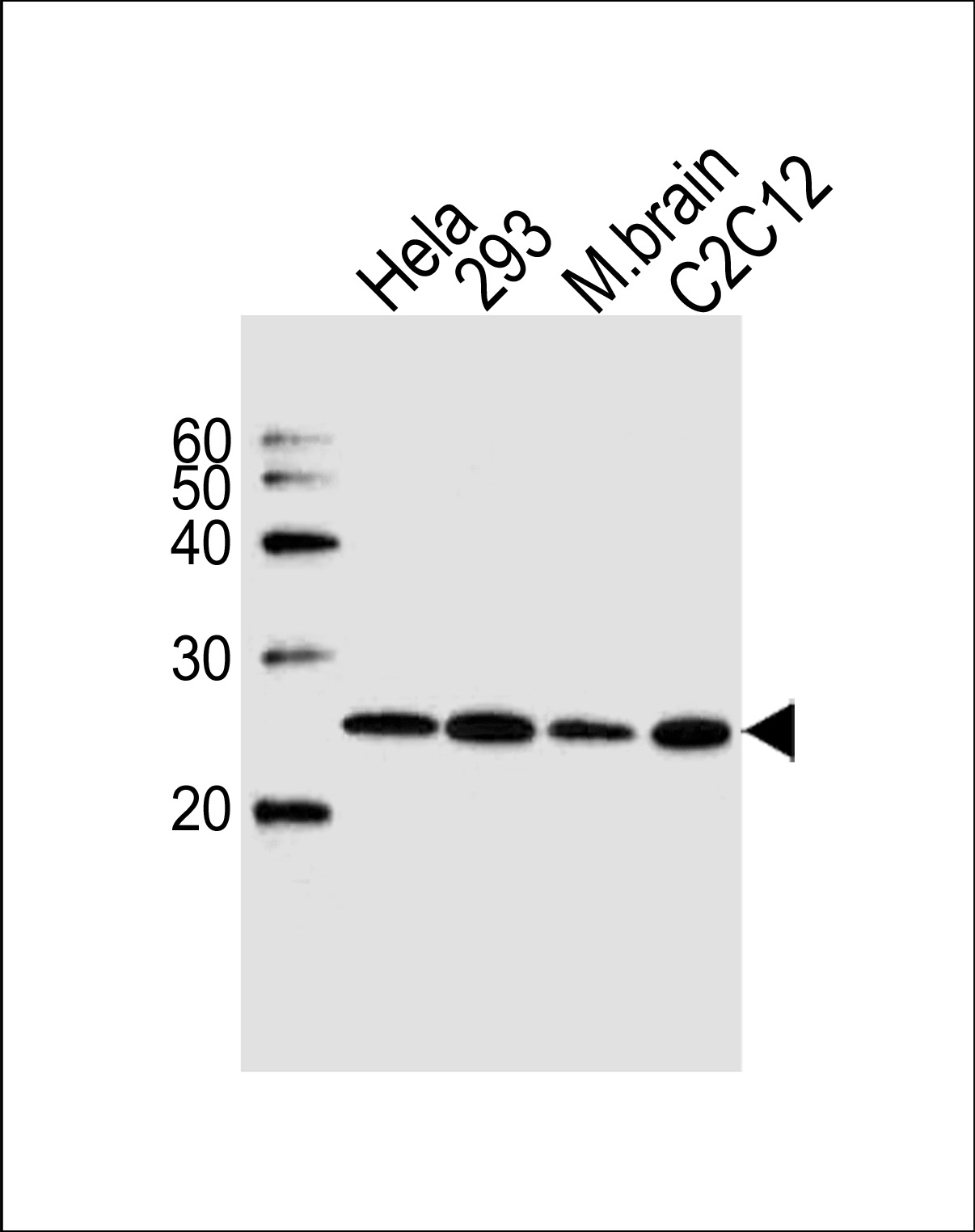产品名称
UBE2K Rabbit Polyclonal Antibody(N-term)
别名
Ubiquitin-conjugating enzyme E2 K, Huntingtin-interacting protein 2, HIP-2, Ubiquitin carrier protein, Ubiquitin-conjugating enzyme E2-25 kDa, Ubiquitin-conjugating enzyme E2(25K), Ubiquitin-conjugating enzyme E2-25K, Ubiquitin-protein ligase, UBE2K, HIP2, LIG
存储缓冲液
Purified polyclonal antibody supplied in PBS with 0.09% (W/V) New type preservative N. This antibody is purified through a protein A column, followed by peptide affinity purification.
Human Gene ID
NP_001104582.1;NP_001104583.1;NP_005330.1
Human Swissprot No.
P61086
特异性
This UBE2K antibody is generated from rabbits immunized with a KLH conjugated synthetic peptide between 2-30 amino acids from the N-terminal region of human UBE2K.
运输及保存条件
Maintain refrigerated at 2-8°C for up to 2 weeks. For long term storage store at -20°C in small aliquots to prevent freeze-thaw cycles.
背景介绍
The protein encoded by this gene belongs to the
ubiquitin-conjugating enzyme family. This protein interacts with
RING finger proteins, and it can ubiquitinate huntingtin, the gene
product for Huntington's disease. Known functions for this protein
include a role in aggregate formation of expanded polyglutamine
proteins and the suppression of apoptosis in polyglutamine
diseases, a role in the dislocation of newly synthesized MHC class
I heavy chains from the endoplasmic reticulum, and involvement in
foam cell formation. Multiple transcript variants encoding
different isoforms have been identified for this gene. [provided by
RefSeq].
组织表达
Expressed in all tissues tested, including spleen, thymus, prostate, testis, ovary, small intestine, colon, peripheral blood leukocytes, T-lymphocytes, monocytes, granulocytes and bone marrow mononuclear cells. Highly expressed in brain, with highest levels found in cortex and striatum and at lower levels in cerebellum and brainstem.
细胞定位
Cytoplasm {ECO:0000250|UniProtKB:P61085}.
功能
Accepts ubiquitin from the E1 complex and catalyzes its covalent attachment to other proteins. In vitro, in the presence or in the absence of BRCA1-BARD1 E3 ubiquitin-protein ligase complex, catalyzes the synthesis of 'Lys-48'-linked polyubiquitin chains. Does not transfer ubiquitin directly to but elongates monoubiquitinated substrate protein. Mediates the selective degradation of short-lived and abnormal proteins, such as the endoplasmic reticulum-associated degradation (ERAD) of misfolded lumenal proteins. Ubiquitinates huntingtin. May mediate foam cell formation by the suppression of apoptosis of lipid-bearing macrophages through ubiquitination and subsequence degradation of p53/TP53. Proposed to be involved in ubiquitination and proteolytic processing of NF-kappa-B; in vitro supports ubiquitination of NFKB1. In case of infection by cytomegaloviruses may be involved in the US11-dependent degradation of MHC class I heavy chains following their export from the ER to the cytosol. In case of viral infections may be involved in the HPV E7 protein-dependent degradation of RB1.

